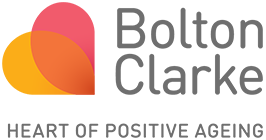Narrow Band imaging to predict the likelihood of healing venous leg ulcers
Researchers: Rajna Ogrin, Dinesh Kumar, Kylie Elder, Behzad Aliahmad, Priya Rani, Jacinta Anderson
Research partners: RMIT
Study population: Home and Community Support clients
Funding support: Trajan Scientific and Medical
Leg wounds occur more often in older people, causing pain, restricting mobility and reducing social engagement. They may also take a long time to heal and lead to complications like infections and needing to go to hospital. A key issue is that it is difficult to know which wounds won’t heal as expected.
Narrow Band imaging is a new type of photography using up to 100 colour channels rather than the usual three. This provides more information about the chemistry of wounds than pathology tests alone. Previous research by RMIT identified this type of imaging can help better predict the healing of foot wounds in people with diabetes.
In this study, we are working with RMIT to build on the research already done and find out if there is extra information these type of photos can provide to help us predict which leg wounds will heal normally and which ones need more help to heal better.

